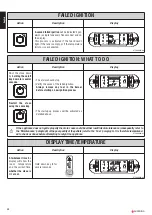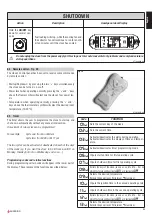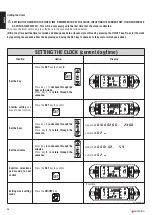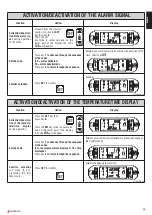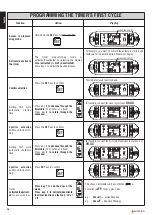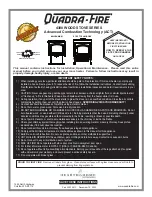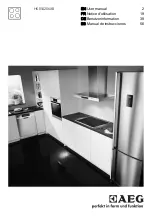
SUPERIOR
®
E
n
g
li
s
h
11
1.10 Connecting to a conventional chimney - Fig. 21-22
If you wish to use an existing chimney it is strongly recommended that
you have it checked by a professional chimney-sweep to ensure that it
is completely airtight. The reason for this is that the smoke, because it
is slightly pressurised, can infiltrate any cracks in the system and esca-
pe into living spaces. If upon inspection you find that the chimney is not
completely sound, it is recommended that you insert piping made of
new material. If the existing chimney is wide enough we recommend a
pipe with a maximum diameter of 150mm. It is also recommended that
you insulate the chimney flue (Fig. 21-22).
For connection to the chimney the use of Piazzetta’s own pipes and
bends is recommended - the stove’s outlet is the right size to connect
to these.
Other types of pipe can be used, provided that they are suitable or that
the compatibility of the connecting sleeve can be verified. Bear in mind
also that pipes and bends must be constructed according to existing
regulations. In such cases however Gruppo Piazzetta S.p.A guarantees
the proper functioning of the stove only where its own equipment has
been employed in accordance with its own instructions.
The connection to the flue system must respect the
40cm minimum
safety distance
from objects which are sensitive to heat and from
inflammable materials (wooden veneers, beams or ceilings etc). (See
figures 17-18)
- If the connector has to pass through partitions or walls constructed
from inflammable or heat-sensitive materials, or through weight-bea-
ring walls, you must introduce:
an insulated barrier equal to or greater than 10cm around the con-
nector using a mineral-based insulating material (rock wool, ceramic
fibre) with a nominal density greater than 80kg/m
3
- If the connector has to pass through partitions or walls construc-
ted from heat-resistant materials, you must introduce:
an insulated barrier equal to or greater than 5cm around the con-
nector using a mineral-based insulating material (rock wool, cera-
mic fibre) with a nominal density greater than 80kg/m
3
.
- Check that the connection to the flue system has been carried out so
as to guarantee that smoke will not leak from it under the equipmen-
t’s pressurised operating conditions.
- Check that the pipe does enter too far into the flue creating a narro-
wing of the exhaust passage. Figure 22-23
Ensure that all installation work is carried out to professio-
nal standards.
COMIGNOLO
RACCORDO A T
CON CANNA FUMARIA
NON INTEGRA
INSERIMENTO DI
UN TUBO
SPORTELLI PER
ISPEZIONE
ISOLANTE
Max ø150 mm
ø 80 mm
DT2030339-00
Fig. 21
FLANGIA DI CHIUSURA
FLANGIA DI CHIUSURA ERMETICA
IN ACCIAIO INOX O ALLUMINATO
PRESA D'ARIA ESTERNA
CON GRIGLIA NON RICHIUDIBILE
DT2030340-00
Fig. 22
Insulating material
Tee
Chimney stack
Pipe insertion
With damaged flue
Inspection
windows
Closing flange
Sealing flange in stainless
steel or aluminium
Fresh air intake with
non-closable grille




















